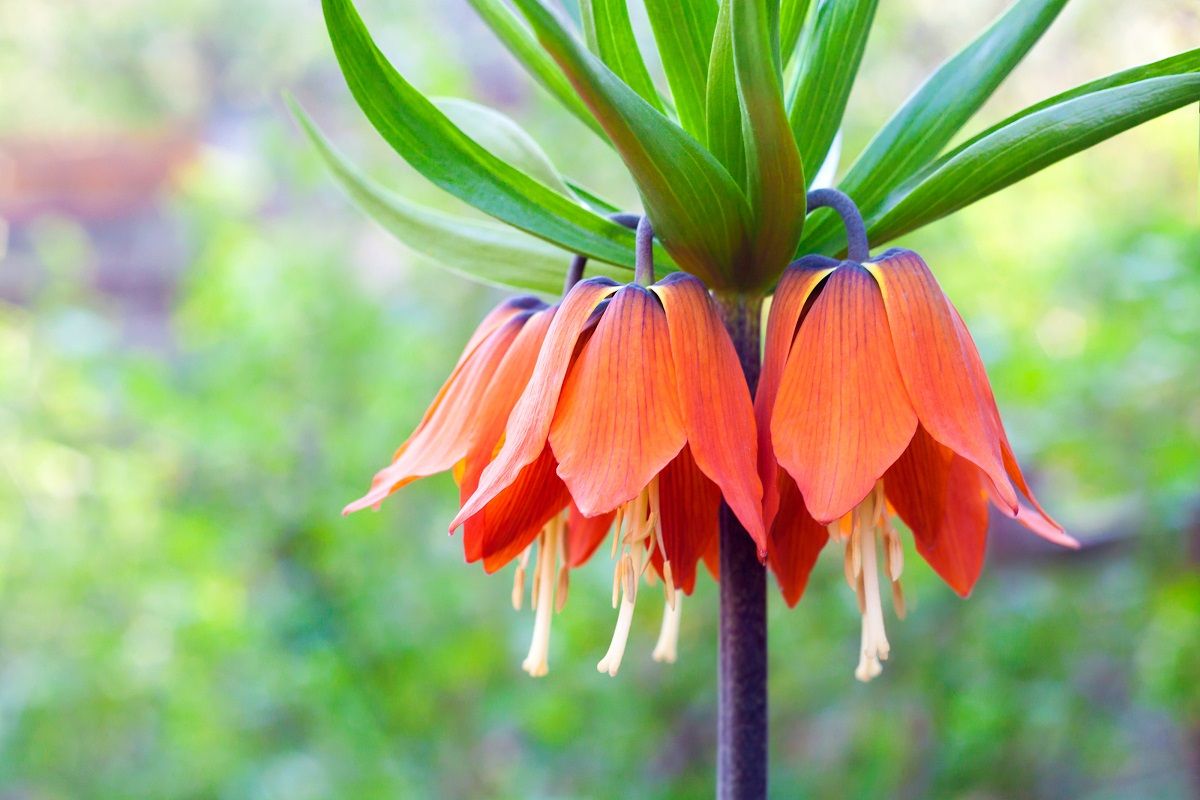If you've ever walked through a flower garden in bloom and thought you smelled something unpleasantly pungent, you may not have been imagining things. The huge, regal, brightly colored blooms of the imperial crown fritillary plant are legendary for their distinctly "unfloral" smell, which has been described as putrid, sulfuric, sweaty, or fox-like.
The foxy odor of the bulbs, leaves and flowers may have evolved as a way to repel herbivores such as moles, gophers or deer. For the imperial fritillary, which is native to the dry, rugged mountains of southwest Asia, where few other green plants survive, the ability to repel hungry plant-eaters is a valuable weapon.
The odiferous nature of the bulbs has given them a mythical place in European gardens, where they are commonly planted as protective "fences" around ornamental or vegetable gardens to keep garden pests away.
But for obvious reasons, the offensive smelling flowers are usually planted far from pedestrian traffic, and are rarely brought indoors as cut flowers, despite their beauty.
Scientists have identified a single chemical compound that is responsible for the fritillaries rank odor. Using a combination of high-tech analysis equipment and human "smellers" to test different chemical odors, the researchers discovered the structure of the smelly substance, which turned out to be a sulphurous terpene. The researchers were even able to produce the compound synthetically in the lab.
The discovery that the odor is caused by only a single compound is exciting for flower breeders, who now hope to breed new varieties of fritillaries that will preserve all of the ornamental value, but have none of the foul smell.
More like this:
- How hummingbirds use their sense of smell
- The durian fruit's smell is at odds with its taste
- Flower Power
Source
Helsper, J. P. F. G.; Bucking, M.; Muresan, S.; Blaas, J.; Wietsma, W. A. Identification of the Volatile Component(s) Causing the Characteristic Foxy Odor in Various Cultivars of Fritillaria imperialis L. (Liliaceae). J. Agric. Food Chem; 2006; 54(14); 5087 5091.










